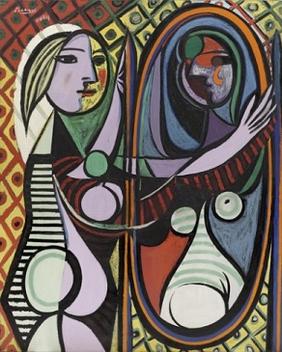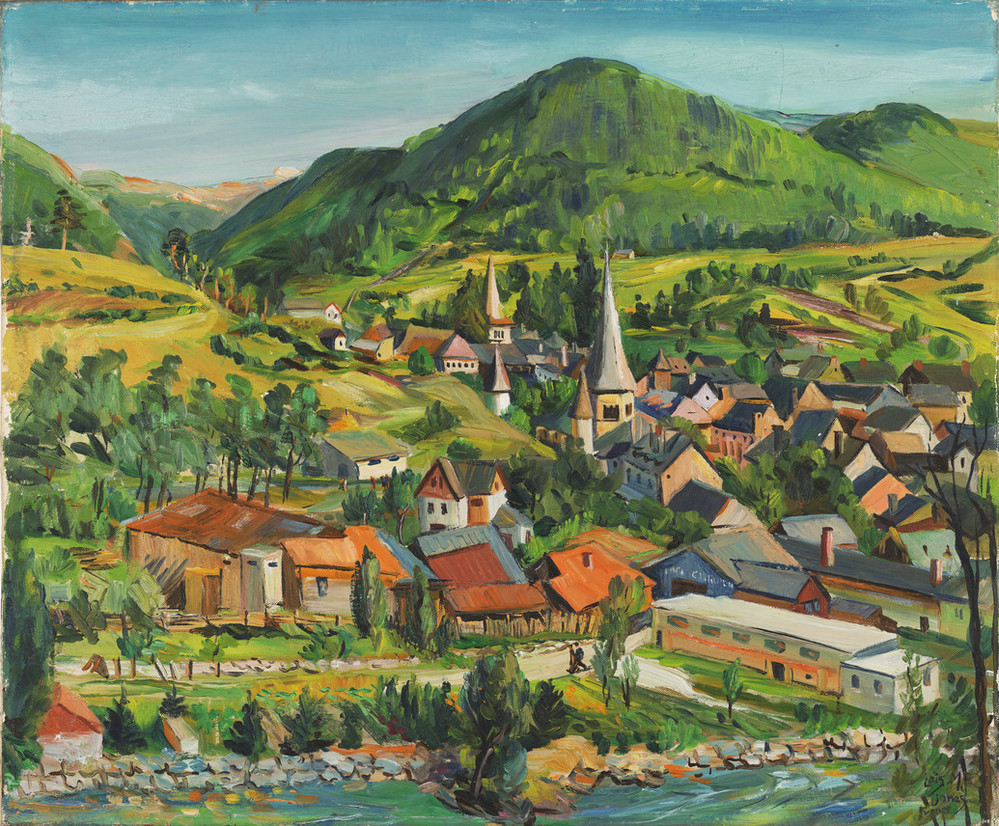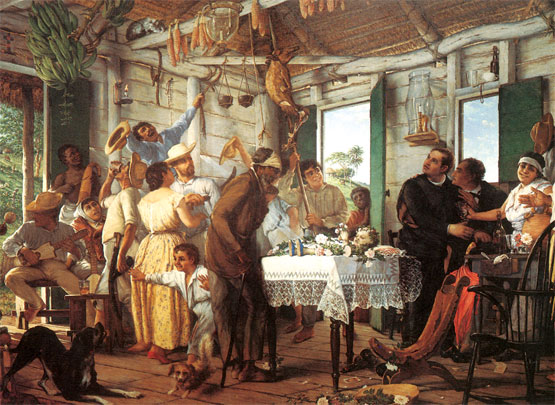Lanita Brooks-Colbert
Since the 18th Century, France and its capital, Paris was considered the center of the art world. Parisians witnessed the end of the reign of Louis XIV with Paris becoming center stage of the Enlightenment. Philosophers, Voltaire, Rousseau, and Diderot, produced world-changing ideas, contributing to the city’s reputation for cultural sophistication. This period in the city’s history brought artists from around the world to Paris to learn and be inspired by the city’s artistic resources and creativity, particularly in painting and its cultural achievements in theatre and music. Paris was in its artistic prime in the 19th and early 20th century, when a colony of artists established in the city, with art schools associated with some of the finest painters of the times.
Then as now, Paris remains an important milieu de rencontre, or meeting place, for people of the African diaspora, including African Americans and those of Caribbean heritage. Columbia University African Diaspora scholar, Dr. Brent Hayes Edwards, said, “Paris allowed boundary crossing, conversations, and collaborations that were available nowhere else to the same degree.” Many African American artists moved to Paris in the 1920s because of the city’s open and tolerant atmosphere, calling the famous arts district, Montmartre home to African American expatriates. Post World War I Paris lured African American writers, thought leaders, artists, entertainers, and musicians. This emigration from 1910 – 1940’s had as much to do with race relations in the United States as it did with the cultural and social attractions of Paris, the City of Lights. Luminaries such as Josephine Baker, Richard Wright, James Baldwin, and a host of jazz and blues musicians found in Paris an environment free from overt racism. It was, to be certain, not a color-blind society or one devoid of irony. The artist Palmer Hayden, who describes his 1930 painting, “The Janitor Who Paints”, as “a sort of protest painting” because of his economic and social standing in America, found that he was treated better by the French when he let it be known that he was an American. Yet Paris provided, as the abstract painter Edward Clark, whose style was shaped by the years he spent in Paris in the early 1950’s, observed, Paris was a place where “one was hated as an equal.” This may sound like cold comfort, but it was a welcome change for American blacks inured to the indignities encountered at home. The Harlem Renaissance Movement from 1910 –1942 was the aftermath of this passage, as some artists returned home while other artists’ work in Paris became known in America.

African Diasporic creative influences on American and Caribbean Blacks and artists aligned with Modernism in19th Century Paris broadly situates modern and contemporary artwork by people of African descent in discussions of traditional West African art. African art dates back before written records. Africans used art to communicate and reflect their religions and traditions, often using symbols and codes representing power to indicate the status of their people and leaders in masks, paintings, and face art, characterized by geometric patterns and vivid dissonant colors.

Fauvism, emerging in late 19th century France, distinguished by its use of bold colors, complex brush- strokes, and non-real figures and other art movements in nineteenth century Paris were influenced by African art, seen by Parisian artists including Picasso, reflected in Girl Before a Mirror” (1932) and Girl with Mandolin (1910). In Wassily Kandinsky ‘s work, Black and Violet (1923), the admiration for explosive Fauve colors accompanies his artistic turn to Cubism. Both artists’ blending of several viewpoints in the same painting, creates pictures that appear broken and abstracted, but also recall African sculpture and masks used in performance where the performer twists and turns allowing the viewer varied perspectives. Cuban artist Wilfredo Lam, who lived in Paris 1938-1941, influenced by his African, Asian, and European ancestry, as well as the Surrealist Movement in Paris, painted The Jungle (1943), fusing images of Afro-Caribbean deities and spirits with European Cubism and Surrealism, referencing West African religions, Santeria and Vodoun. African American artist, Jacob Lawerence, describing his work, The Builders (1947), called his own style “Dynamic Cubism”. While not strictly adhering to the tradition of Cubism, Lawerence utilized fragmented forms and bold color to create a dynamic visual language. History tells us that for American Black creatives to live, paint, write, and perform in Paris was obligatory for their careers and Paris’ bohemian allure was enough to attract talent from abroad that sought personal freedom as well artistic freedom. African American painter, Henry Ossawa Tanner settled in France in 1891 and enjoyed considerable success. His legacy along with painters such as Annie E. Anderson, who studied in Paris after being denied attendance at the prestigious Corcoran School of Art in Washington D.C., opened doors for African American artists who lived and worked in Paris during the Jazz Age including sculptors Elizabeth Prophet and Augusta Savage, and painters Palmer Hayden, Hale Woodruff, Archibald J. Motley, Jr., and Albert Alexander Smith and later Lois Mailou Jones. Lois Jones met painter, Celine Tabary in Paris 1937 and became part of a social cohort of Black creatives living in Paris in the 1930’s. When Jones returned home to America, she and Tabary with abstract painter, Alma Thomas formed ‘The Little Paris Group’. Mailou Jones displays French influence in her work ‘Arreau Hautes-Pyrenes’ (1949), showing a nearly impressionistic style that recurred throughout her career. The bold emblematic qualities of African art in her work, The Ascent of Ethiopia (1932), led her to create abstract art with striking color contracts and three-dimensional forms.

Did African and Afro-Caribbean artists form a cohort like the impressionists and fauvists did or did they work solely? African American in Paris did not stand alone as an ethnic group in France. Since the early 1700, Blacks, the Africa Blacks and French West Indies Blacks lived in France. In 1930 the Negritude Movement, a political artistic literary movement originated in Paris. The movement centered around a group of black students, scholars and artists from the Caribbean and Africa who lived and/or studied in Paris. Their main objective for the creation of the movement was bringing together artists and thought leaders from French colonies in Africa and the Caribbean, the French West Indies, with the aim of promoting an appreciation of the history and culture of black people. In 1930’s Paris, African American artists, intellectuals, and writers encountered African and French West Indies comrades. The bond that was developed between these three groups was highly productive in terms of mutual influences and cross pollination in area of literature, art, culture, and notably political awareness. Out of this unity of black cultural heritage, African American writer,James Baldwin wrote his famous essay ‘Prince and Powers”. Stuart Hall, Jamaican born British sociologist and cultural theorist said, “Cultural identity … is a matter of “becoming” as well as of “being.” Yes, African American and Caribbean artists living and working in Paris did form a cohort in social and art historical context.

In 1996, The Studio Museum in New York exhibit Exploration in the City of Lights: African American Artists in Paris 1945-1965 explored the effect Paris had on African American artists working there opining that for American artists of African heritage, Paris presented a place where everything was open to them. In 2016, the exhibition, The Color Line, at the Musee du Quai Branly, in Paris introduced French audiences to 200 works of African- American artists. The exhibit chronicled a dark period in the United States through the cultural history of its Black artists, the prime target of racial discrimination. Unlike America, a stimulating art scene awaited them in the French capital. This artistic discrimination continued to consume artist like Beauford Delaney, a modernist painter of the early 20th century, with the prejudices of being black and gay in a racist homophobic society forcing him to emigrate to Paris in 1952, where he changed his artistic style, studying color and light through abstract expression. This is shown in his Untitled work (Yellow, Red, and Black Circles for James Baldwin, Istanbul). In 2017, a documentary directed by Joanne Burke, titled Paris Noir: African American in the City of Lights shared the achievements and challenges of black artists in Montparnasse while giving us an appreciation of beneficial cultural exchange between France and Black America. Black intellectuals, musicians, writers, artists launched the appreciation of Black culture worldwide.

The recent (June 15 – October 14, 2024) Guillaume Lethière exhibit at Clark Art Institute, in Williamstown, Massachusetts shows his captivating use of light in his works. Guillaume Lethiere, a favorite of Bonaparte and his court, was a central figure in the Caribbean community in Paris. His works, The Oath of the Ancestors (1822), depicting the defeat of French colonial forces and achieving independence for Haiti addresses issues of colonialism, slavery and diaspora in its political, social and art historical context. Lethière’s home was described as “open to all Creoles”. He was close friends with General Thomas-Alexandre Dumas from Saint-Domingue (present-day Haiti). His birth and story were typical of colonization. A son of a white plantation owner and enslaved woman of mixed race, Lethiere moved to France with his father at the age of fourteen to study drawing and painting. He achieved the highest levels of recognition for his works at his time. His work was not well known until the Clark Art Institute exhibit shed light on the presence of Caribbean artists in France during his lifetime.
The Caribbean African Diaspora French influence continues with Francisco Oller, a Puerto Rican painter who spent time in Paris (1856 – 1896). Francisco Oller’s work, El Velorio (1893) was influenced by Impressionism and Realism. His work combined his experiences abroad with his attachment to Puerto Rico’s geography, light, and customs. Oller’s work helped shape a uniquely Caribbean aesthetic that was an important contribution to both the Paris avant-garde and the Puerto Rican school of painting.
In the last 50 years, museums, scholars, writers, filmmakers, archivists, visual and spoken artists have examined and presented the profound significance of Black heritage culture in Modernism and those who are responsible for its place in history. Hybrid art generated by cross cultural interaction did, can and will hopefully leave an archival and antidotal footprint that represents acknowledgement and acceptance of who we are and our place in history.

